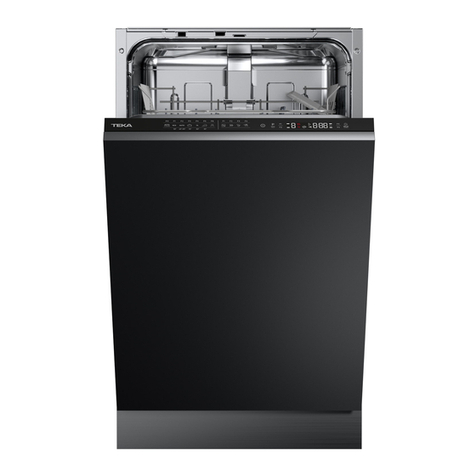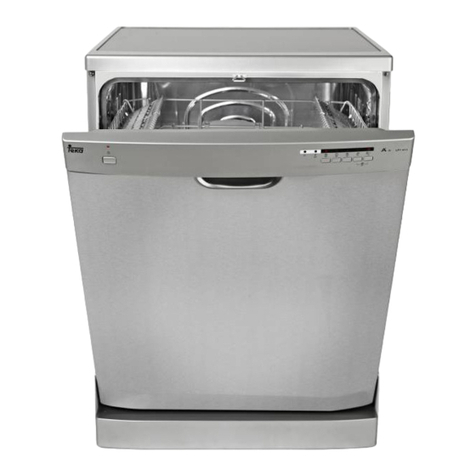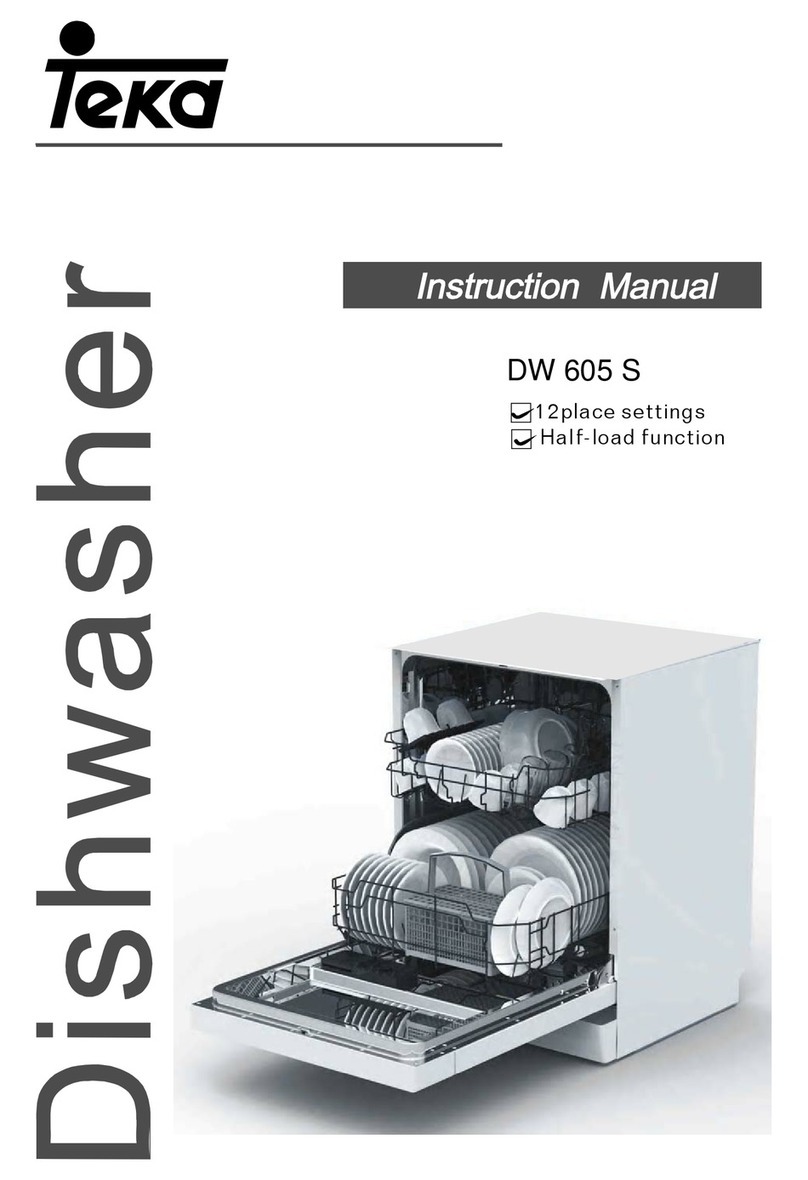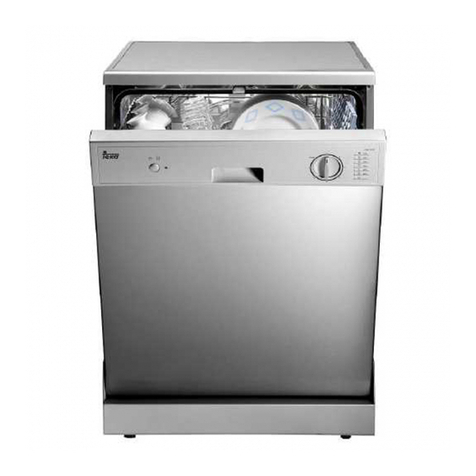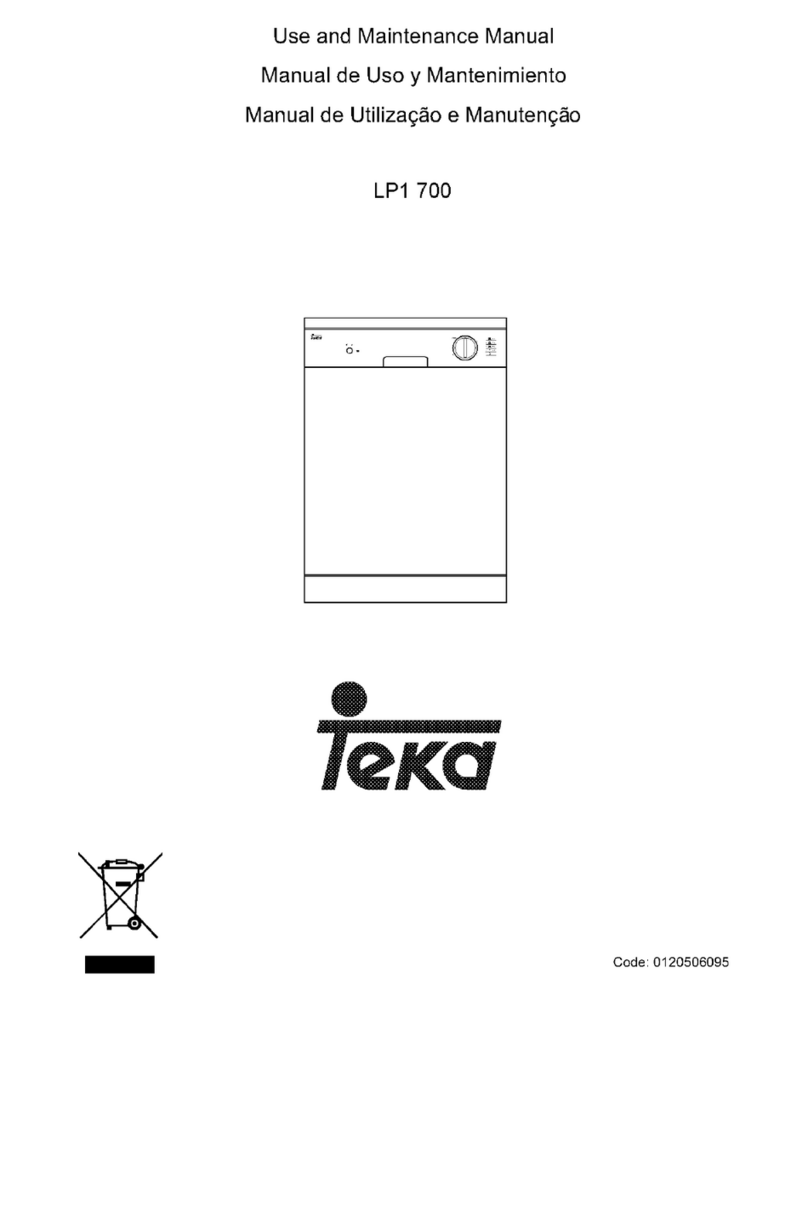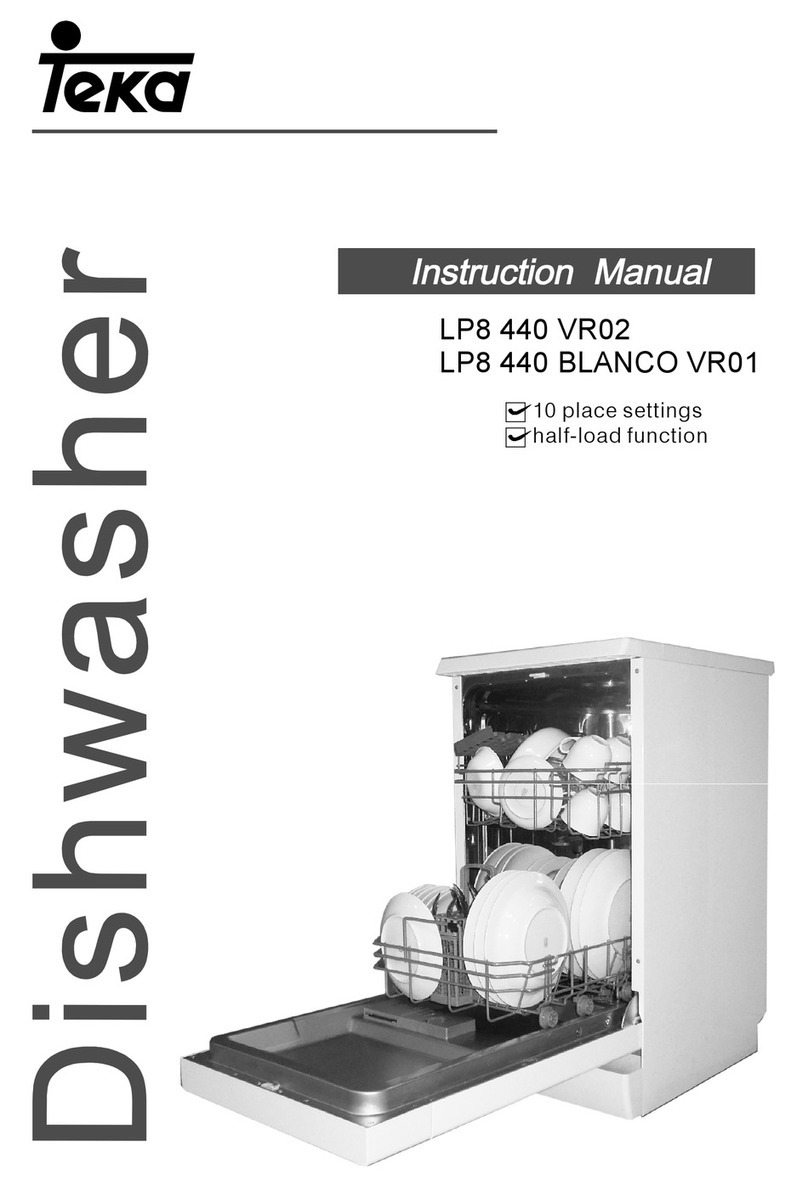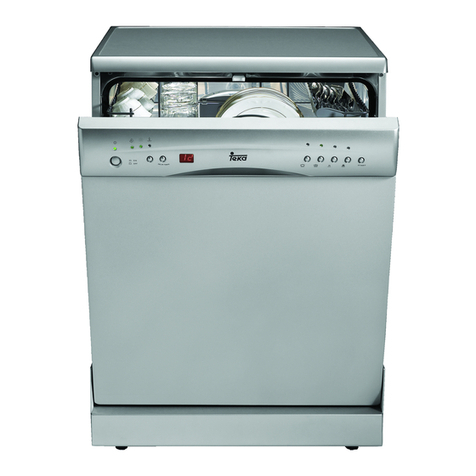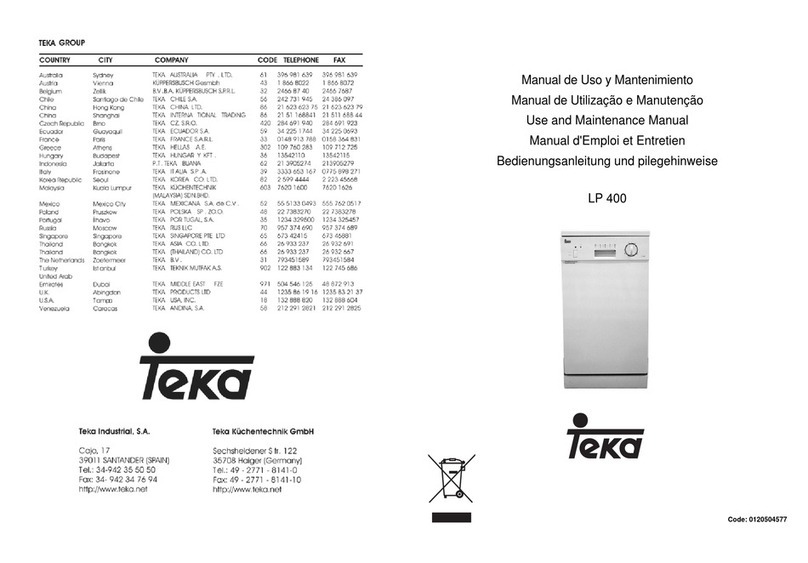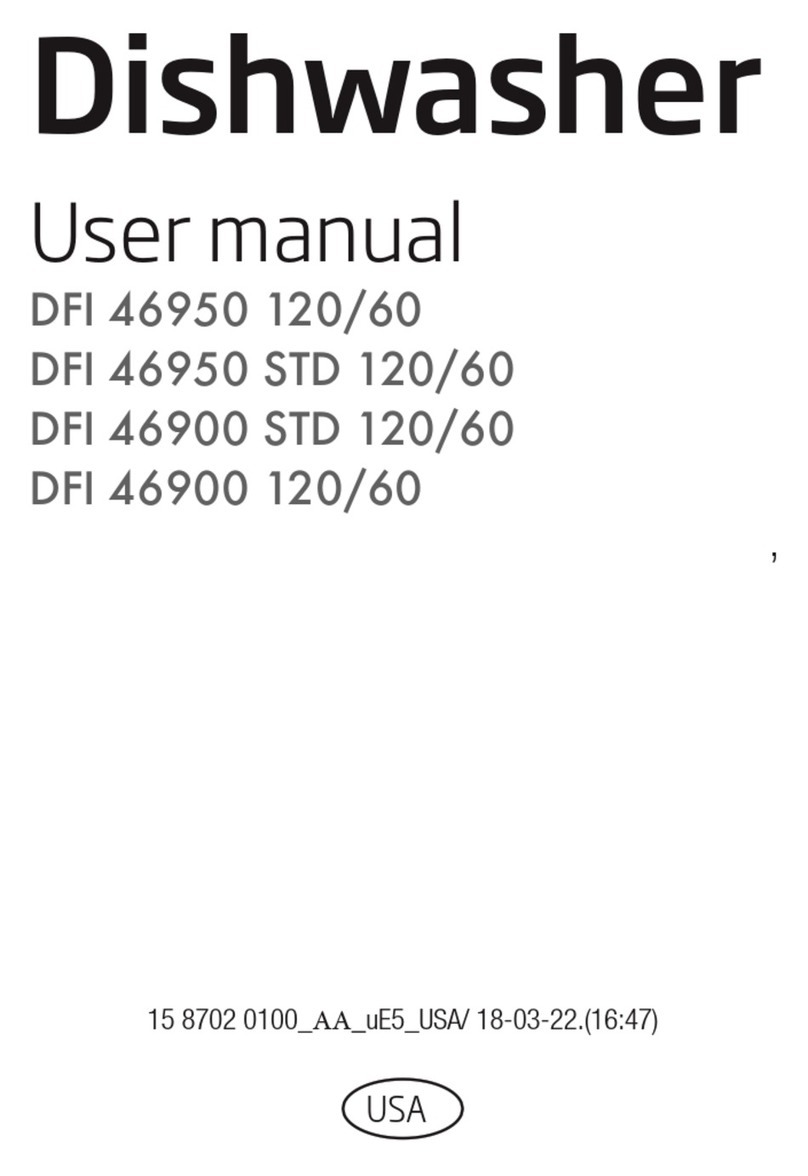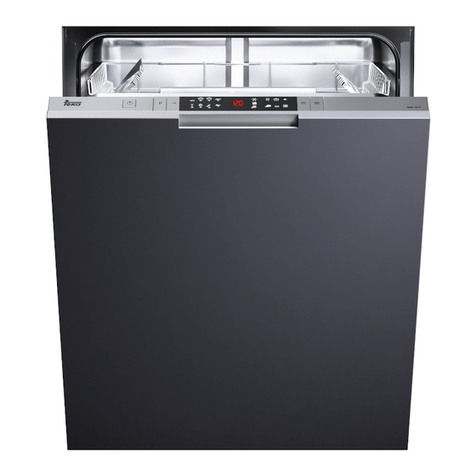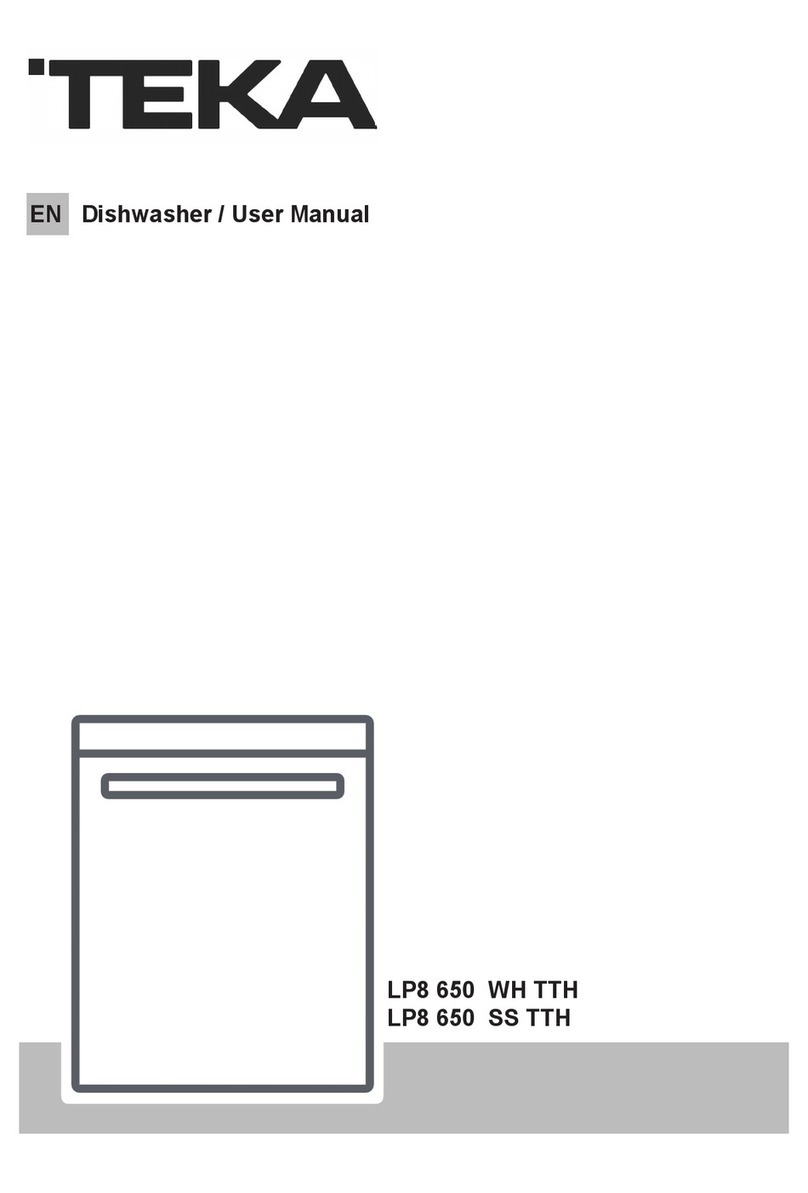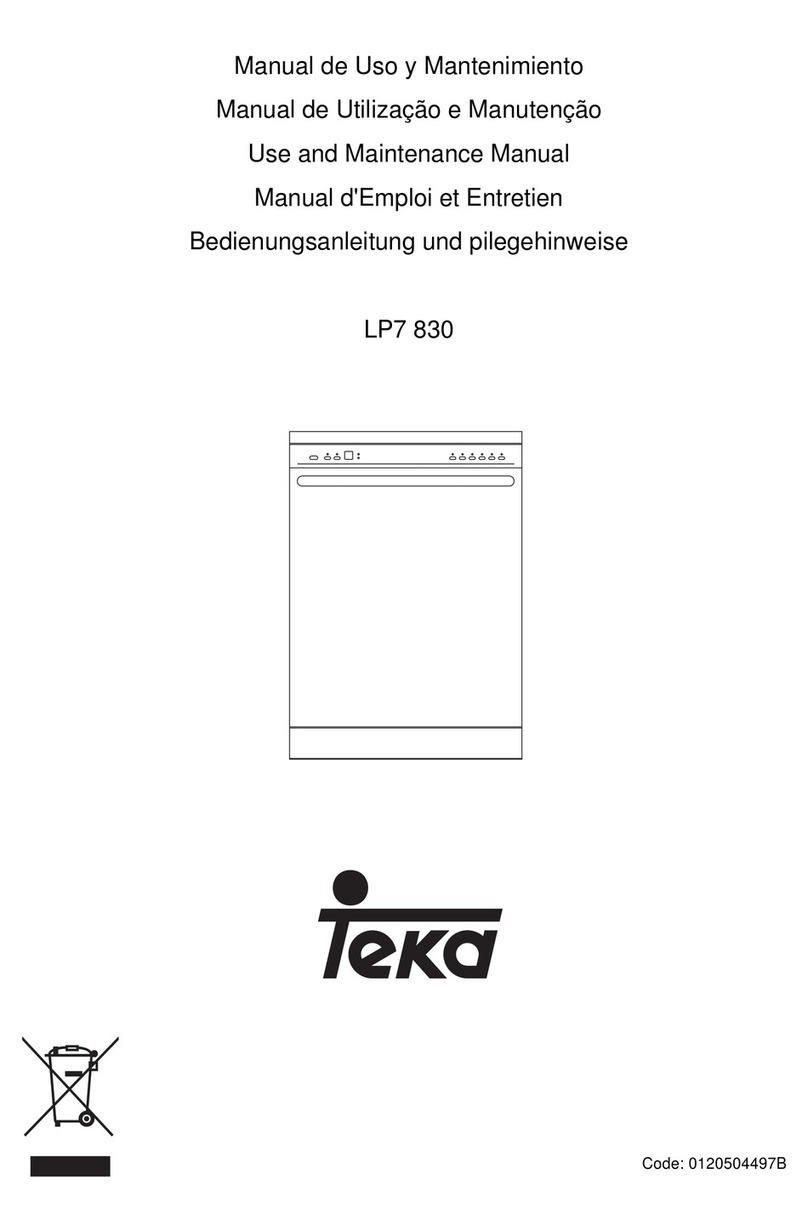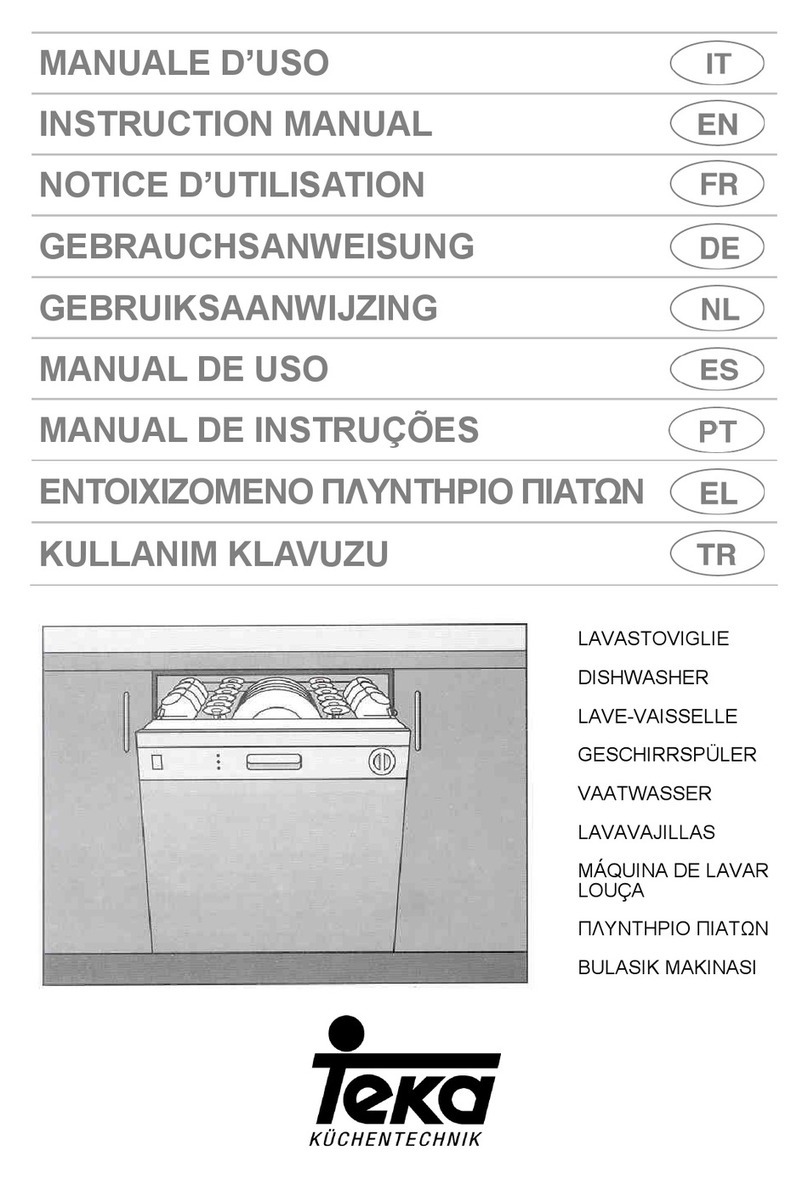.6.
GB
Turning on the Appliance
Starting a wash cycle
After having completed all of the installation steps in the pre-
ceding paragraphs, turn on the water all the way and press the
ON-OFF button (A) located on the control pannel. The "B" indi-
cator light will come on. At this point, the appliance is on but you
must wait a few seconds before programming the setting for the
cycle.
Cancelling or modifying a cycle while underway
Premise
:
A cycle that is underway can only be modified if it has
only been running for a short time.Otherwise, the detergent may
have already been used,and the appliance mayhave already
drained the wash water. If this is the case,the detergent dis-
penser must be refilled (see the paragraph entitled,"Loading the
Detergent").
To modify a cycle that is already underway, press the ON-OFF
button (A) ,then all of the settings will be cancelled.
If you forget to load some of the dishes
The wash cycle can be interrupted by pressing the Start/Pause
button.You can then load additional dishes and turn the appli-
ance back on.The cycle will start where it left off.
Premise: After selecting the wash cycle as indicated in the para-
graph entitled ,"Setting and Starting a Wash Cycle..."the delay
time can be set.
1/2 load Button
This button(see "close-up View - Control Panel",letter"C") make
it possible to wash dishes using only the upper rack if there are
not enough dishes for a full load.This will allow you to save on
water and eletrical energy. It can be used before setting any of
the wash cycle, except for the intensive cycle ( if included in the
wash cycle table). Please keep in mind that the amount of deter-
gent should also be cut in half.
During the delay period ,it is preferable not to change any of the
settings.
a) If it is necessary ,all of the settings must be cancelled by press-
ing the ON-OFF button (A) to indicate that all of the settings
have been cancelled.
At this point,all of the steps for"Setting the Wash Cycle with a
delayed Start Time" and "setting and Starting a Wash Cycle"must
be repeated,following the instructions contained in the corre-
sponding sections.
b)If the door is opened during the delay period, the indicator will
blink and acoustic signal will sound, and the countdown will stop.
It will begin again when the door is closed .
At the end of the wash cycle
Six acoustic signal will indicate that the wash cycle has finished
and the cycle indicator light (H) for the cycle will begin to die out.
Turn off the appliance using the ON-OFF button.Turn off the
water supply to the appliance and open the door. Wait a few
minutes before unloading the dishwasher to avoid handling the
dishes and utensils while they are still hot and more susceptible
to breakage. They will also dry better.
Setting and Starting a wash Cycle
Select the desired cycle by pressing the selector button (G). Each
time the button is pressed, one of the"H" cycle indicator lights
will come on in succession. Choose the wash cycle you feel is
most appropriate for the type of dishes that need washing (consult
the wash cycle table contained in this manual, especially when
first using the appliance).
Press the Start/Pause button(I), and after a few seconds a short
acoustic sound will indicate that the wash cycle has begun and
can no longer be changed. If necessary ,read the paragraph
entitled " Cancelling or modifying a cycle while underway..."
Wash cycle Program Light
The wash cycle is running and the cycle indicator light (H) for
the cycle will begin to blink.
By pressing the "E" button (see close-up view-'Control panel")
the start of wash cycle can be delayed for between 1 to 12 hours.
Each time the button is pressed,the display (F) will show the
number of hours for the delay period.Choose the amount of
time desired.When the appliance is started with "I" button,a short
acoustic signal will sound and the delay time on the display will
blink ,indicating that the countdown has begun.
After the time has elapsed,the cycle will start.
NOTE:
Wash Cycle adjustment Buttons
Setting the Wash Cycle with a Delayed Start Time

